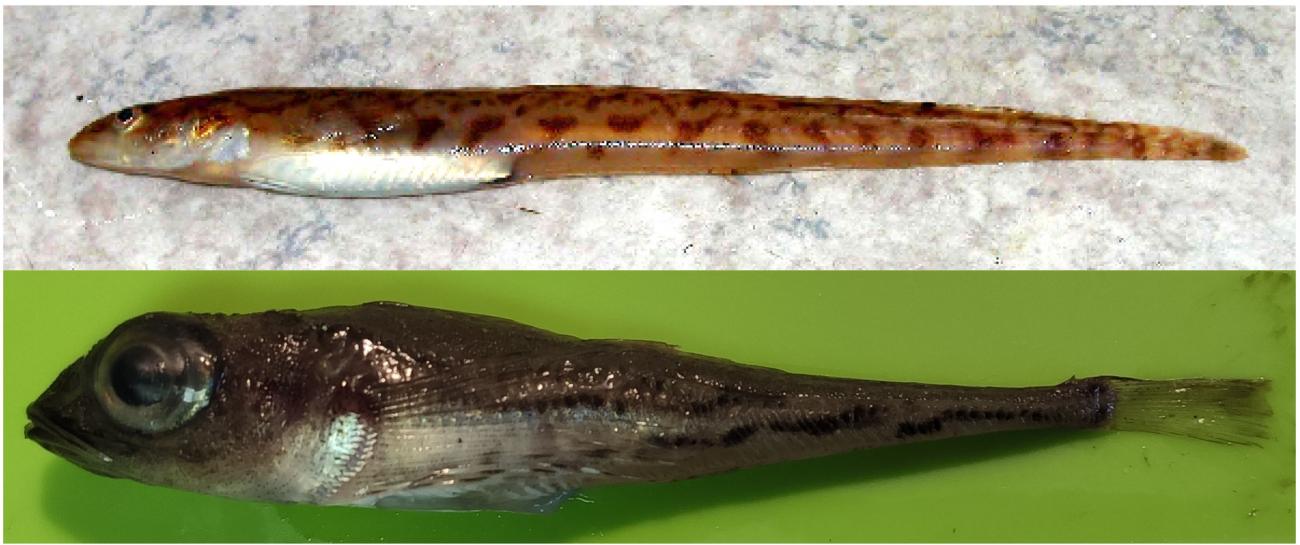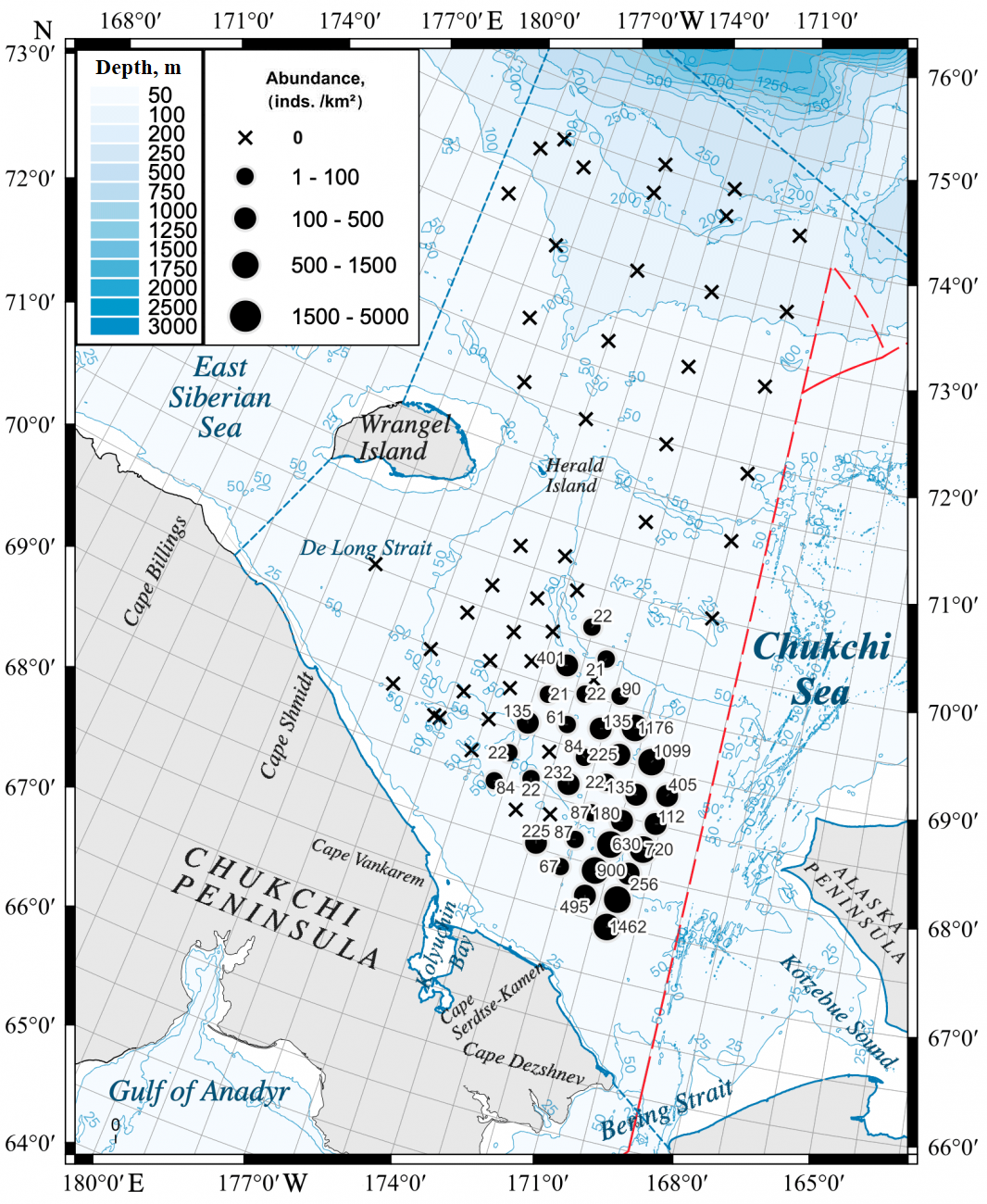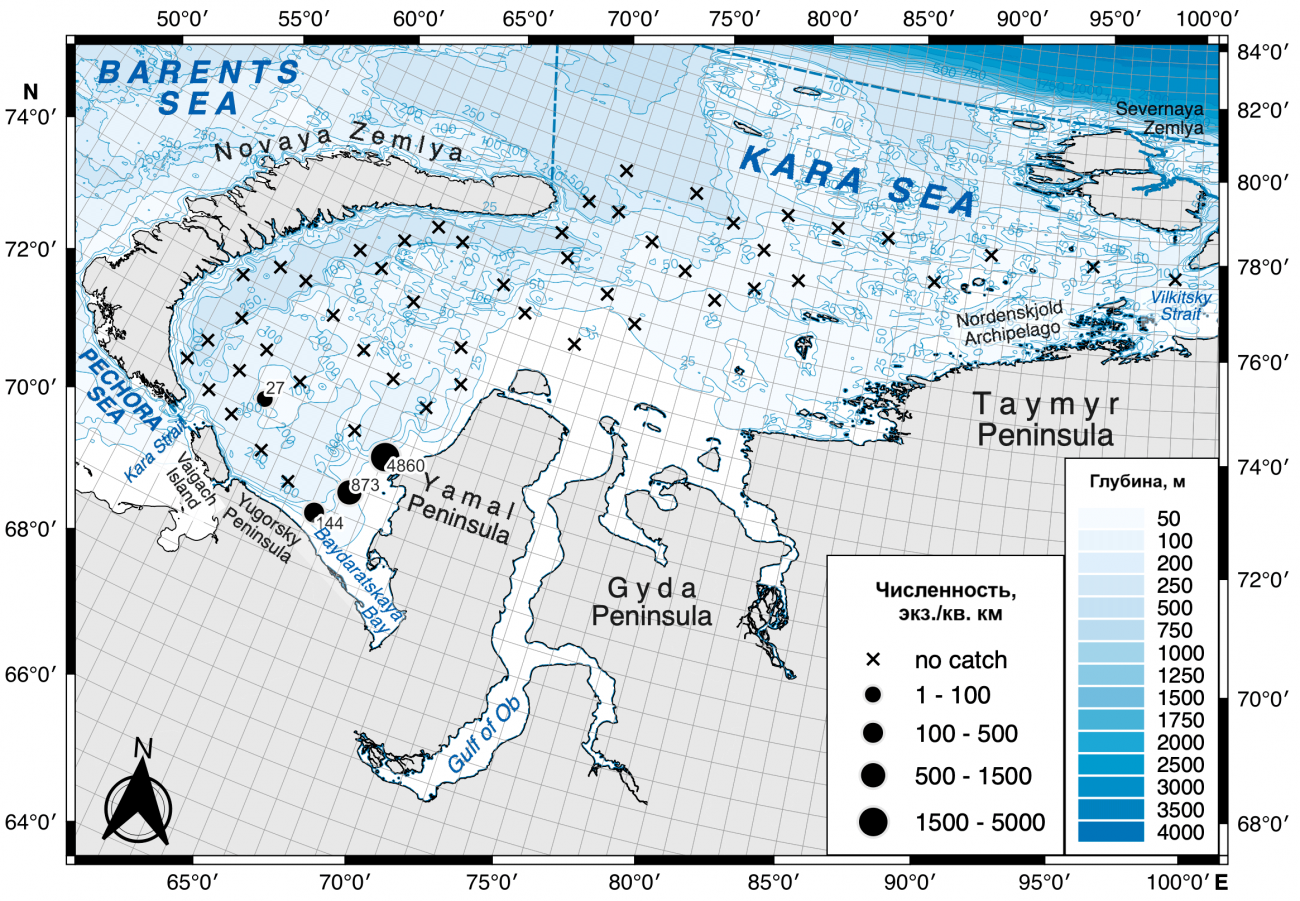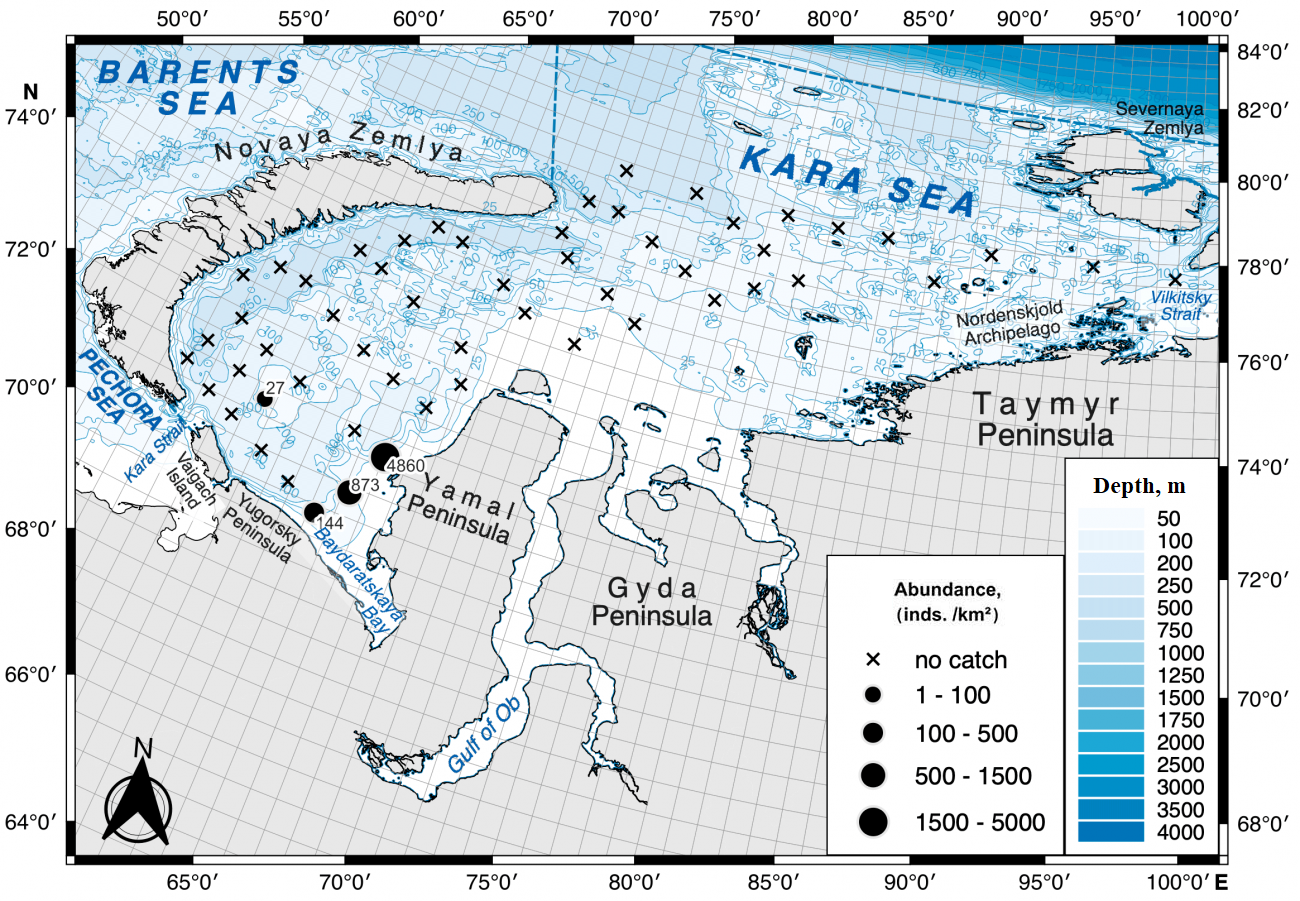
Scientists from the P.P. Shirshov Institute of Oceanology of the Russian Academy of Sciences, the A.N. Severtsov Institute of Ecology and Evolution of the Russian Academy of Sciences, the Kamchatka Branch of the Pacific Institute of Geography of the Far Eastern Branch of the Russian Academy of Sciences, and the All-Russian Research Institute of Fisheries and Oceanography have obtained new data on the spatial and vertical distribution, temperature characteristics of the habitat, size-age and size-sex structure, age and growth rates, sizes and age of sexual maturity, fertility, and food composition of the slender eelblenny Lumpenus fabricii (Stichaeidae) and the bigeye sculpin Triglops nybelini (Cottidae) in the seas of the Russian Arctic (Fig. 1).

The maximum concentrations of Lumpen fabricius in the Chukchi Sea were noted in its southwestern part at depths of less than 100 m at a bottom temperature of 3.0-5.0°C (Fig. 2), and in the Kara Sea - in the very southeastern part at isobaths less than 50 m at bottom temperatures from -1.5 to -1.0°C (Fig. 3). The caught specimens were 4-9 years old, 102-268 mm long and weighing 3.1-28.3 g, however, in the Chukchi Sea the dominant specimens were 5-6 year old fish, 111-130 mm long and weighing 4-6 g, and in the Kara Sea – 6-7 year old specimens, 141-200 mm long and weighing 8-16 g. This species is characterized by sexual dimorphism in size: males are larger than females, the fertility of which varied from 115 to 436 eggs. Among specimens over 180 mm long, the proportion of females decreases sharply, reaching zero at a length over 220 mm, which is why the largest specimens of this species are exclusively males. This species is a benthophage, whose main food in the Chukchi and Kara Seas is small benthic and demersal invertebrates (mainly various polychaete worms).

The bigeye sculpin was recorded throughout the surveyed area of the Laptev Sea at depths of 110–752 m at bottom temperatures ranging from -1.3 to +1.4ºС (Fig. 4). The catches included individuals aged 2–6 years, 66–110 mm in length, and 1.46–11.42 g in body weight, with 3–5-year-old fish 66–105 mm in length and 2–8 g in body weight dominating. Sexual dimorphism in the exterior features and sizes of mature males and females was established. Among fish over 95 mm in length, the proportion of females increases sharply, reaching 100% at over 100 mm in length. Despite the relatively wide food spectrum, the bulk of the biomass (89%) of the bigeye sculpin in the Laptev Sea is formed by hyperiids and euphausiids, which are concentrated in the bottom layer. As the size of individuals increases, the food spectrum narrows by half: the relative importance of the first of them in the diet increases sharply, while the second, on the contrary, decreases.

Along with other small representatives of the high-latitude bottom ichthyofauna, the studied species can be considered as indicator species of the state of Arctic ecosystems. Therefore, obtaining new data on their ecology not only contributes to a better understanding of the functioning of high-latitude marine coastal ecosystems, but also allows monitoring their condition in the modern period, characterized by sharp climate changes and increased anthropogenic load (shipping, mining, fishing, tourism, etc.).
The work was published in the journal Polar Biology: Tokranov, A.M., Emelin, P.O., Orlov, A.M. 2025. Distribution and biology of understudied slender eelblenny Lumpenus fabricii (Stichaeidae, Teleostei) in two Siberian Arctic seas, with comparative data on some other ground fishes // Polar Biology. V. 48. Article 17.
The work was also published in the journal Fisheries Research: Tokranov, A.M., Emelin, P.O., Orlov, A.M. 2025. Distribution, life history traits, and ecological significance of bigeye sculpin Triglops nybelini (Cottidae) in Siberian Arctic marine ecosystems // Fisheries Research. V. 281. Article 107265.
